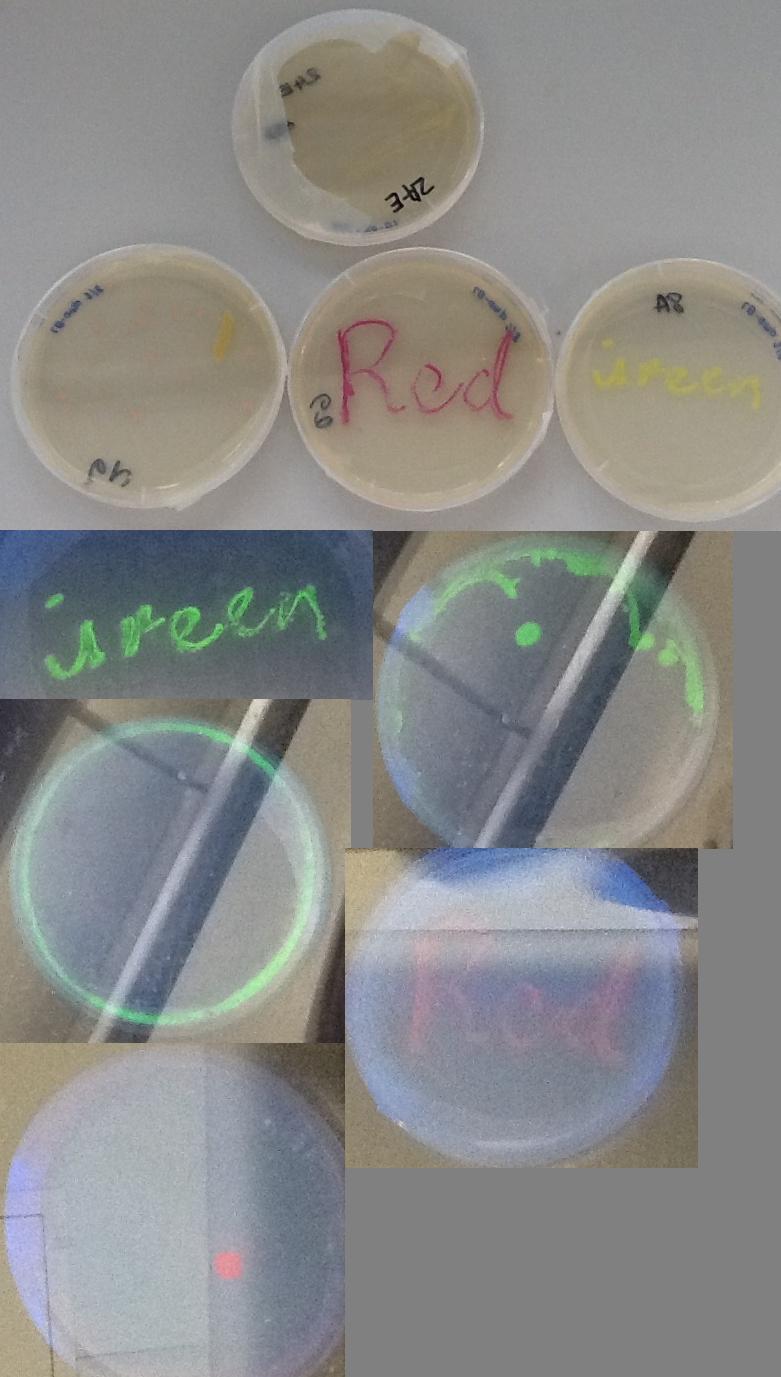Team:Macquarie Australia/Protocols/Outreach Planning Part Two
From 2012.igem.org
Second attempt at growth of fluorescent E. coli for Outreach
Due to the transformation last week being unsuccessful, we reattempted to transform the 5 constructs (RFP, OFP, CFP, GFP and luciferase) for the Outreach component.
The procedure was as follows:
- 1) We obtained competent E. coli cells from -80°C (from Rob Willows lab)
- 2) Tubes were defrosted in hand and put on ice
- 3) 2 µl of the chosen construct from the allocated well as added to 100 µl of competent cells. RFP, OFP, CFP and GFP all used the Fusion Blue E. coli cells and Luciferase used BL21 cells.
- We used the competent cells allocated for the biobrick construction in order to test their competency due to being stored.
- 4) After 5 minutes on ice, the tubes were put on 42°C water bath for 30 seconds for heat shock. The tubes were put back on ice for another 2 minutes.
- 5) 500 µl of SOC media was added to each tube and incubated at 37°C on a shaker on a high setting.
- 6) For each construct, four plates were allocated (LB Ampicillin) - two without IPTG (20 or 200 µl) and two with IPTG (20 or 200 µl). A total of 20 plates were allocated for constructs. Another four plates with the same set of conditions as the constructs were also used as a control – 2 µl of Milli-Q water instead of 2 µl of the allocated construct.
- 7) Plates were incubated at 37°C overnight.
Changes to last week include:
- 2 ul of plasmid added instead of 1ul
- Competent cells were defrosted and THOROUGHLY mixed with plasmid
- 500 ul of SOC media was added last, in the previous attempt it was added at the incorrect time
- A control: 2 µl Milli-Q water was added instead of plasmid. It should not grow as it is plasmid-less and will not have ampicillin resistance.
- Longer incubation before checking for growth - growth was not apparent on plate until 24 hours after initiation of incubation
Unfortunately, there were too few transformants and thus Rob Willows performed the protocol and was successful. Pictured below are the fluorescent plates before UV and under UV.
 "
"







